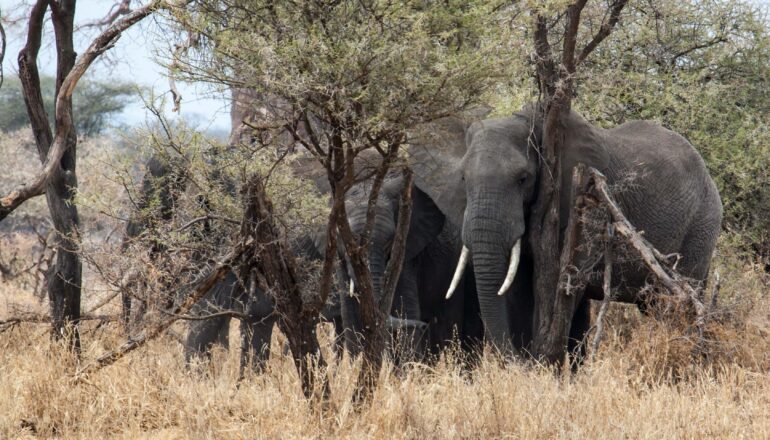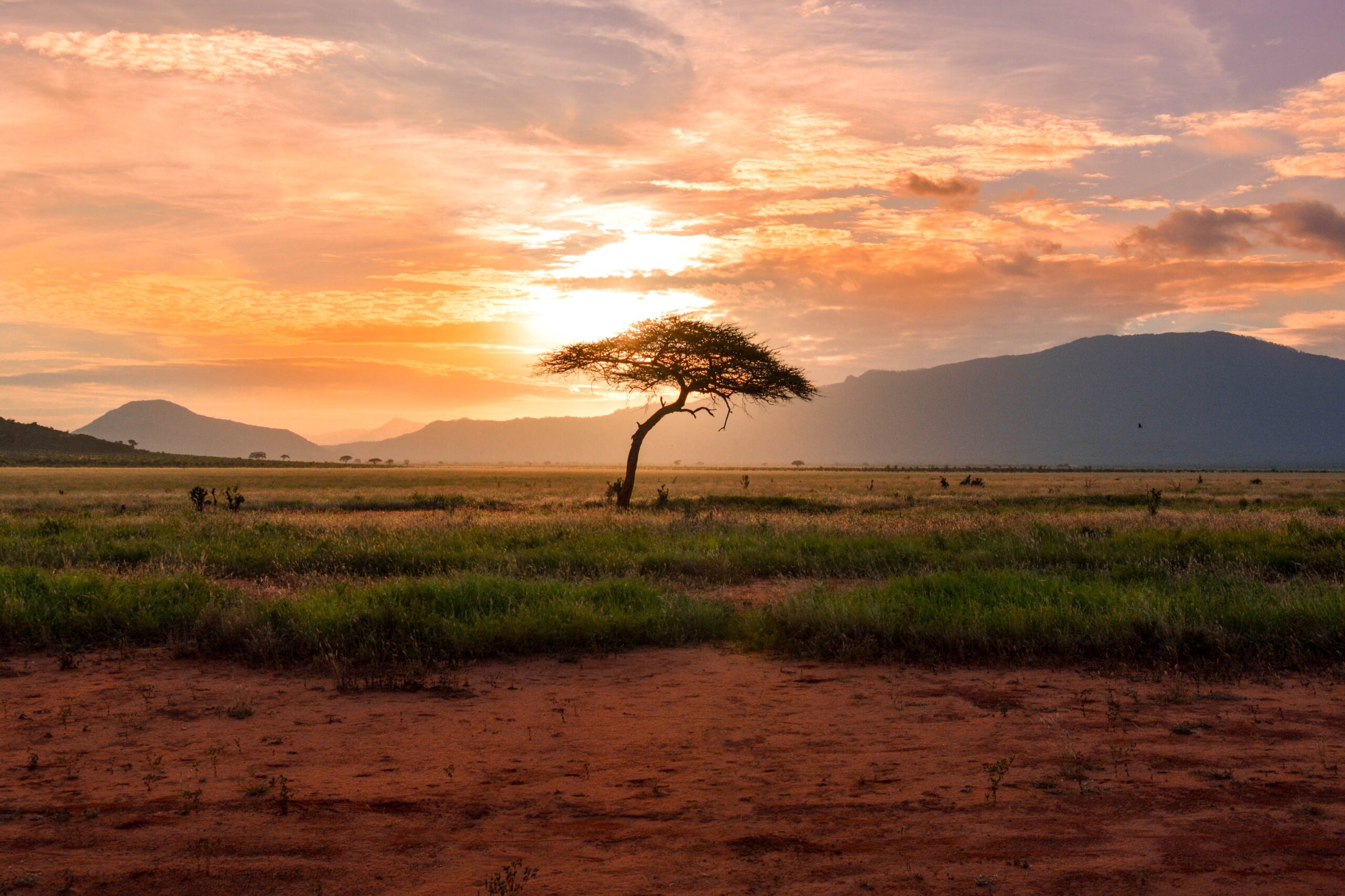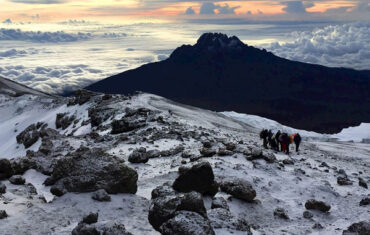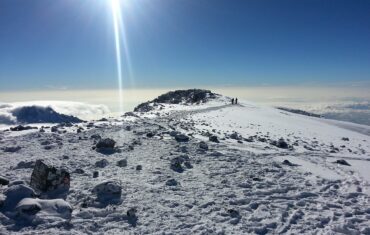Origins of the Safari Experience
When we hear the word “safari,” we imagine a group of tourists moving through an African savannah in search of large wild animals: lions, rhinos, buffalo, and elephants. In historical pictures, we often see men in pith helmets with guns in their hands, while modern pictures show people in SUVs holding long lens cameras. It is an animal hunt – hunting in the literal sense, or just observing and photo-hunting – in the vastness of the hottest continent. Fashion connoisseurs may also think of beige-colored clothing with a straight cut, the obligatory wide belt, and a wide-brimmed hat, inherited from the British military who served in Britain’s African colonies. All these are our first associations with the beautiful word “safari,” which sounds like it could be an Arabic given name.
A modern-day safari is a sightseeing trip to an African national park, the main purpose of which is to observe wild animals. In the past, safaris were organized with the objective of hunting large animals. Africa’s canonical Big Five: the elephant, lion, rhino, African buffalo, and leopard are associated with the hunting traditions of Africa. These five mammals were prized as the toughest and most prized trophies among hunters.
The Word “Safari”: A Linguistic Journey
The word “safari” itself comes from Swahili – the main language of the people of East Africa. It means “journey, trip” and goes back to the Arabic word “safar” with the same meaning. In Swahili-speaking countries, the term refers to any journey. There is even a common phrase, safari njema! It is a wish for a good and pleasant journey.
How has safari become a popular pastime? The Oxford Dictionary defines “safari” as “a trip to see or hunt wild animals, especially in east or southern Africa”. In the West, this word gained popularity thanks to British traveler Richard Francis Burton, who, in the 19th century, explored East Africa with John Henning Speke and enthusiastically immersed himself in the languages and customs of the people he encountered. Gradually the word “safari” spread into other languages and was used to refer to travel in the wilds of East Africa.
By the way, Richard Burton became famous not only as a linguist and ethnographer but also as a person who translated into English the ancient Indian Kamasutra as well as the Arabic and Persian tales of the Thousand and One Nights. Moreover, he was a rare non-Muslim pilgrim to Mecca and had to disguise himself as a sheikh or a dervish to secretly make those pilgrimages. Burton is also famous as the first European to discover the great African Lake Tanganyika, which stunned him with its beauty.
Historical Safari Expeditions
One of the most well-known historical safari trips was the long expedition embarked upon by the 26th U.S. President Theodore Roosevelt. In 1909 he went to Africa with his son and a large escort team for almost a year, just after his presidential term ended. Photos of Roosevelt on the hunt were printed in the newspapers, and a documentary about the trip was shown immediately upon his return. There is a book report of African Game Trails written by Roosevelt himself. We may be struck today by the list of animals killed on that safari, which is scrupulously given in the book. But the expedition was equipped by the Smithsonian Institution and allegedly had scientific motivations behind it.
Theodore Roosevelt and the Scientific Safari
The expedition brought back from Africa more than 23,000 specimens of plants and animals. It is recorded that 512 large animals have been shot personally by the president and his son, and a total of about 11,400 animals were killed or captured. It took the Institute eight years to catalog all the specimens. They became the basis of today’s National Museum of Natural History in Washington. Therein lay the contradiction in Theodore Roosevelt’s personality: his passion for hunting was joined with his desire to champion the interests of conservationists and scientists. It was he who founded the U.S. Forest Service. Roosevelt was also the first president to establish national parks and numerous protected areas in the United States.
Hemingway and the Romance of African Safaris
Safari as a popular cultural phenomenon was heavily influenced by the American journalist and writer Ernest Hemingway. In the 1930s he traveled through Kenya and Tanganyika (as the mainland territory of present-day Tanzania used to be called). It is known that Hemingway was impressed by Africa’s stunning nature as well as by the magnificent Mount Kilimanjaro. He avidly hunted in Serengeti, Lake Manyara, and Tarangire National Park, fueled by his passion for hunting. His love of nature and hunting influenced Patrick, the writer’s son, who had been traveling with his parents since childhood. Patrick Hemingway eventually moved to Tanzania and lived there for 25 years. He also worked in Uganda and Kenya and even started his own safari business.
Ernest Hemingway’s best-known “African” works are the short story “The Snows of Kilimanjaro ”, and the “Green Hills of Africa” novella, which essentially is an autobiographical report of his family’s safari travels. His other drafts about Africa were compiled into the “True at First Light” book and published after the writer’s death by Patrick Hemingway.
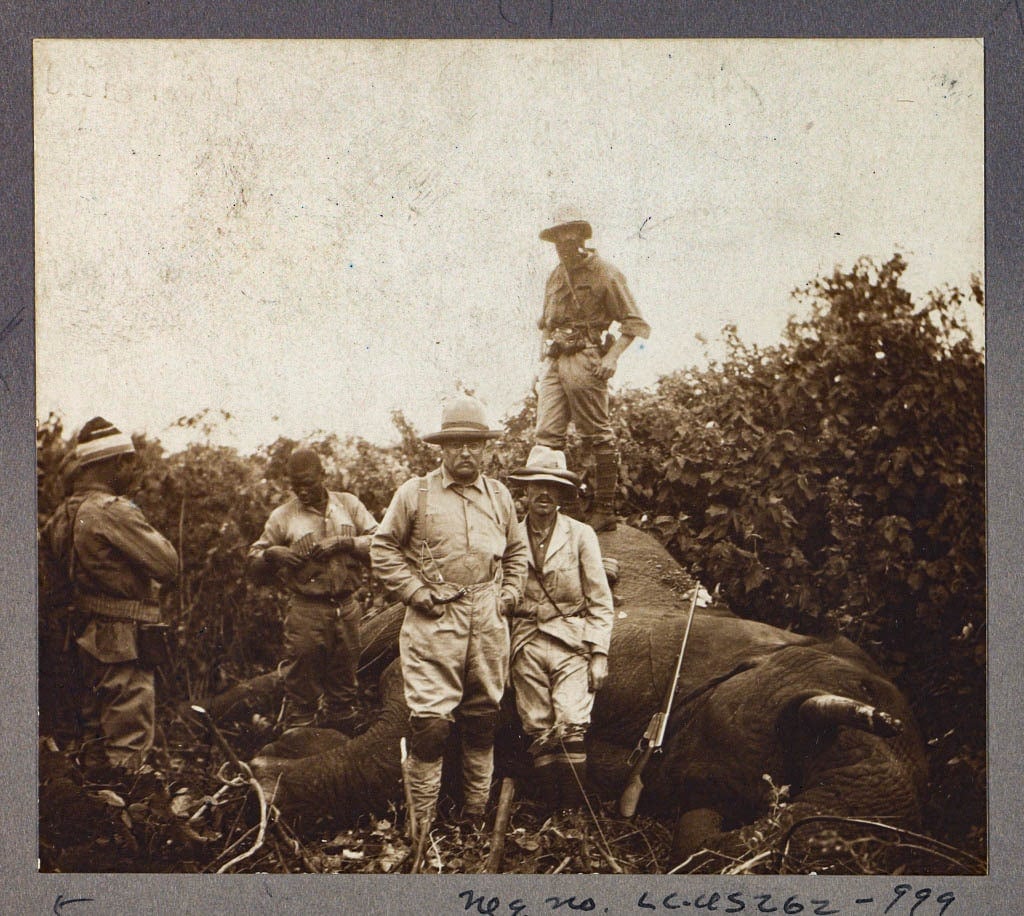
The Safari in Literature and Film
Early Adventure Novels
Adventure novels on the topic of safari started to appear as early as the 19th century. We can remember the classic Jules Verne’s first novel, “Five Weeks in a Balloon”, which was about a journey in the air over Africa. We may also think of a popular novel by Henry Haggard, called “King Solomon’s Mines”, about adventures in South Africa, or of the “World Voyage of a Young Parisian” by Louis Boussenard.
Adventure Diary Entries
Another genre of literature that has preserved many early safari stories was adventure diary entries. Here one may think of William Kingston’s “Adventures in Africa by an African Trader”.Kingston compiled a book from alleged writings by an unidentified ivory trader. Another notable work of this genre was “Trader Horn: A Young Man’s Astounding Adventures in 19th Century Equatorial Africa”, written by another ivory trader, Alfred Horne. Back then many parts of Africa remained unknown to Europeans, and such books fueled the public interest in the exploration of the African continent with its incredibly rich geographical, cultural, and biological diversity.
Safari in Cinema
The age of cinematography began in the early 20th century, and there were many popular adventure films set in Africa (most often in East or Central Africa) that also added interest to the topic of safari. The above-mentioned “Trader Horn” was adapted in 1931, although greatly augmented by fictional events. In the mid-20th century, the theme of jungle adventure was popular, and on cinema screens, you could see the African expanses being added alongside such locations as the jungles of Southeast Asia and the Amazon. Later, the 1985 film “Out of Africa” starring Robert Redford and Meryl Streep had a major influence on the return to fashion of the safari style in clothing and interior design. It was based on the autobiographical book by Karen Blixen, who lived for many years in Kenya, and won seven Academy Awards and three Golden Globes, among other honors.
Influence of “Out of Africa”
Documentaries, like National Geographic and Discovery in East African parks, fueled interest in modern safari travel. Savannah car safari inspires travelers to explore East Africa’s wildlife reserves, igniting their desire for a personal adventure. Many travelers are also pleasantly surprised to find out that apart from driving in a car, there are numerous other ways of visiting the wild places of Africa.
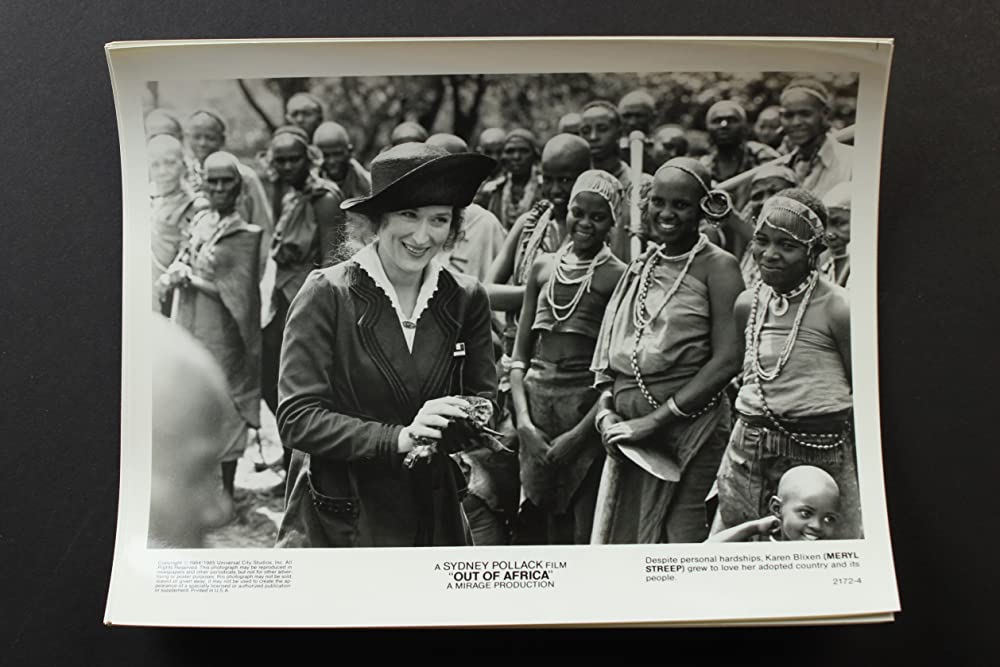
The Modern Safari Experience
Types of Safari Activities
Modern East African safaris: Off-road journeys with driver-guides through national parks to witness wildlife in their natural habitat. Forests and savannas host diverse herds, including elephants, buffalo, zebras, antelope, and solitary or small-group giraffes. The trees are often occupied by monkeys and birds, while warthogs hide in the shade of bushes. Large herbivores are hunted by lion prides and solitary carnivores such as leopards and cheetahs. Jackals and hyenas choose smaller victims. Hippos and crocodiles hide in rivers from the heat. Travelers who go on safari have a unique opportunity to observe all those spectacular environments that are teeming with life.
Advantages of a Car Safari
What are the advantages of driving around a national park in a car? This allows you to see a large number of animals of different species in just 2-3 hours. Rangers report exciting wildlife sightings to the safari driver via radio for swift viewing opportunities. The off-road vehicle ride is the most popular safari format, but it is not the only one.
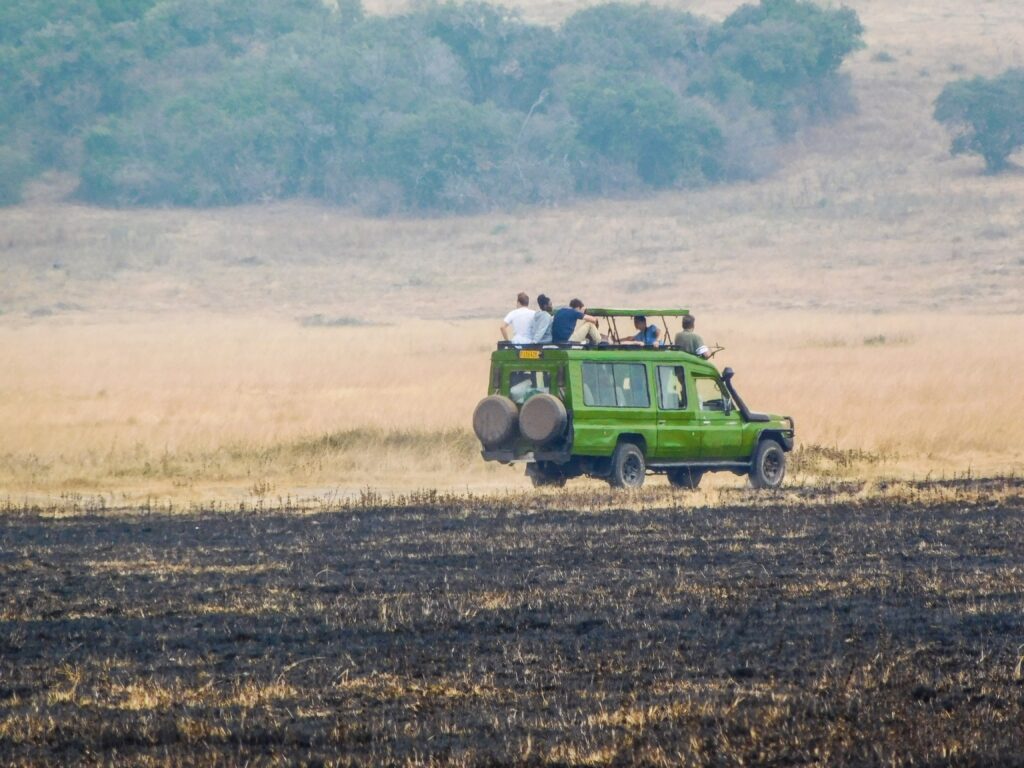
Alternative Safari Experiences
In some parks, where safety conditions allow, you can go on safari afoot. This is usually arranged in the areas where attacks by large animals are unlikely and there are no large herds grazing. For further safety, visitors are accompanied by an armed ranger. Safari walks allow you to get as close as possible to the natural environment of the park, observe the local plant world, and explore nature by encountering it directly.
Balloon safari
One of the most beautiful and unusual ways to go on safari in Africa is to fly over the savannah in a hot air balloon. This will guarantee a thrilling experience for any visitors to a national park. Flying in the basket of a hot air balloon will allow you to marvel at the vastness of the landscapes below, and feel the true spirit of adventure captured in the pre-industrial era novels and travel diaries. Modern aerial safari is a premium type of recreation, which costs more than the classic car tours but guarantees amazing emotions and unusual angles from the bird’s-eye view. A hot air balloon experience is often added as a “highlight” to a regular game-drive safari.
Boat safari
Another fantastic way to look at Africa’s stunning nature from an unfamiliar angle is by traveling on a boat over the surface of lakes, rivers, or even in the ocean. Riding a boat along one of the Tanzanian rivers, you will hear the guide telling you all sorts of interesting facts about crocodiles and hippos. And, of course, you’ll have a chance to observe those magnificent animals in close proximity! On a sea safari, you can go to various islands or ride a boat near the mainland. One of the highlights of a sea safari is getting close to dolphins and observing how those aquatic mammals play.
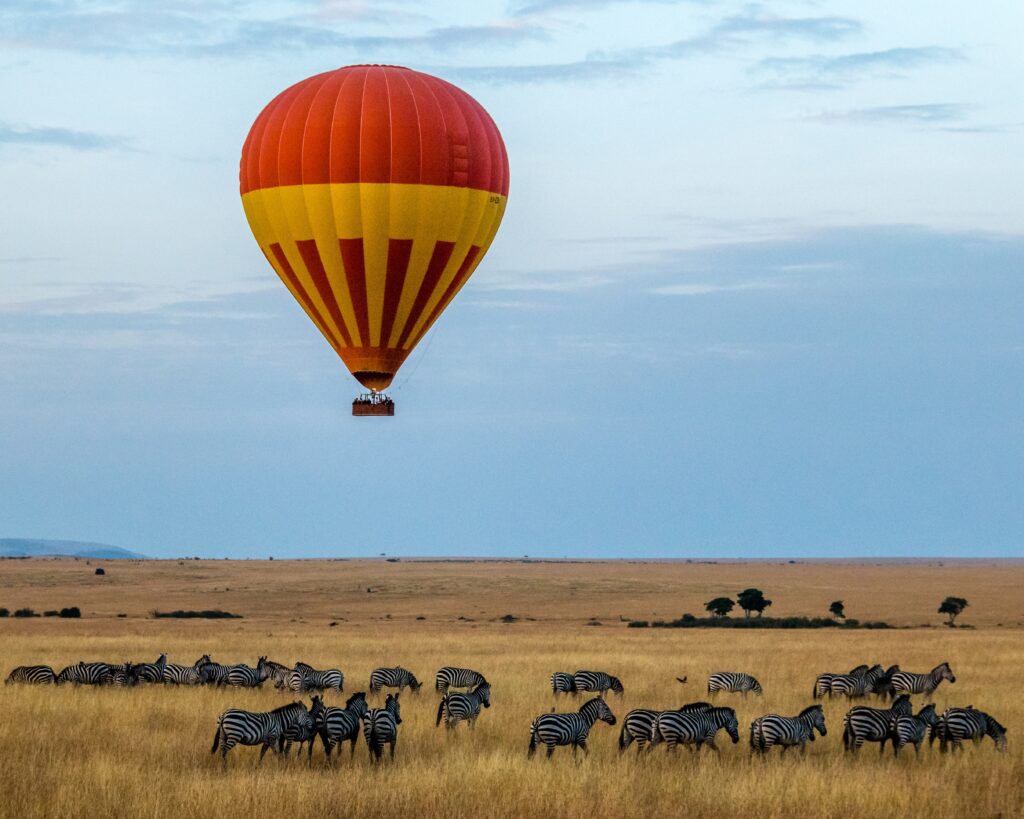
Where to Go for the Best Safari Experience
Serengeti National Park: The Birthplace of Safaris
Perhaps the most famous destination for those wishing to go on a safari tour is the Serengeti National Park in East Africa. Many consider the iconic landscapes of the Serengeti to be the birthplace of the safari phenomenon. It is located in northern Tanzania. A natural extension of this national park can be found in neighboring Kenya, where it is called Maasai Mara National Reserve.
Ngorongoro Conservation Area: Home to the “Big Five”
Another world-famous protected area can be found nearby: the Ngorongoro Conservation Area. It contains the world’s largest ancient caldera which is truly a unique and breathtaking site. The famous zoologist Bernard Grzimek in his book “Serengeti Shall Not Die” called it a huge natural zoo. It is home to the “Big Five” game (elephant, lion, leopard, buffalo, rhino) and huge migrating herds of herbivore animals. The caldera’s steep walls make it seem like the animals are surrounded by a sort of natural enclosure.
Other Notable Safari Destinations:
Other notable parks and protected areas include Kenya’s Amboseli and the Laikipia Plateau, Kruger National Park in South Africa, the Okavango Delta and Chobe National Park in Botswana, as well as Queen Elizabeth National Park in Uganda, among others. And we can also mention the famous national park in Zambia, Mosi-Oa-Tunya, and Zimbabwe’s Victoria Falls National Park. While these two national parks aren’t large, their main advantage is that both are adjacent to the spectacular Victoria Falls. Another remarkable place that can compete with Victoria Falls in popularity is the renowned Mt. Kilimanjaro volcano, whose international fame helped to bring popularity to some less well-known Tanzanian national parks such as Arusha and Tarangire.
Safari Beyond East Africa: Asia’s Safari Parks and more
There are many more notable national parks in other countries of the continent. Safari has long spread beyond East Africa. Moreover, the name “safari” is frequently attached to tours in national parks of Asia, primarily in India, Nepal, Bhutan, and Sri Lanka. In India, for example, Ranthambore, Gir forest, and Kanha national parks are popular. The latter is considered to be the inspiration behind Rudyard Kipling’s “Jungle Book,” which is a story about an animal-raised boy named Mowgli. Generally, these days safari has become a global phenomenon. Commonly used to label wilderness expeditions worldwide, even in Australia.
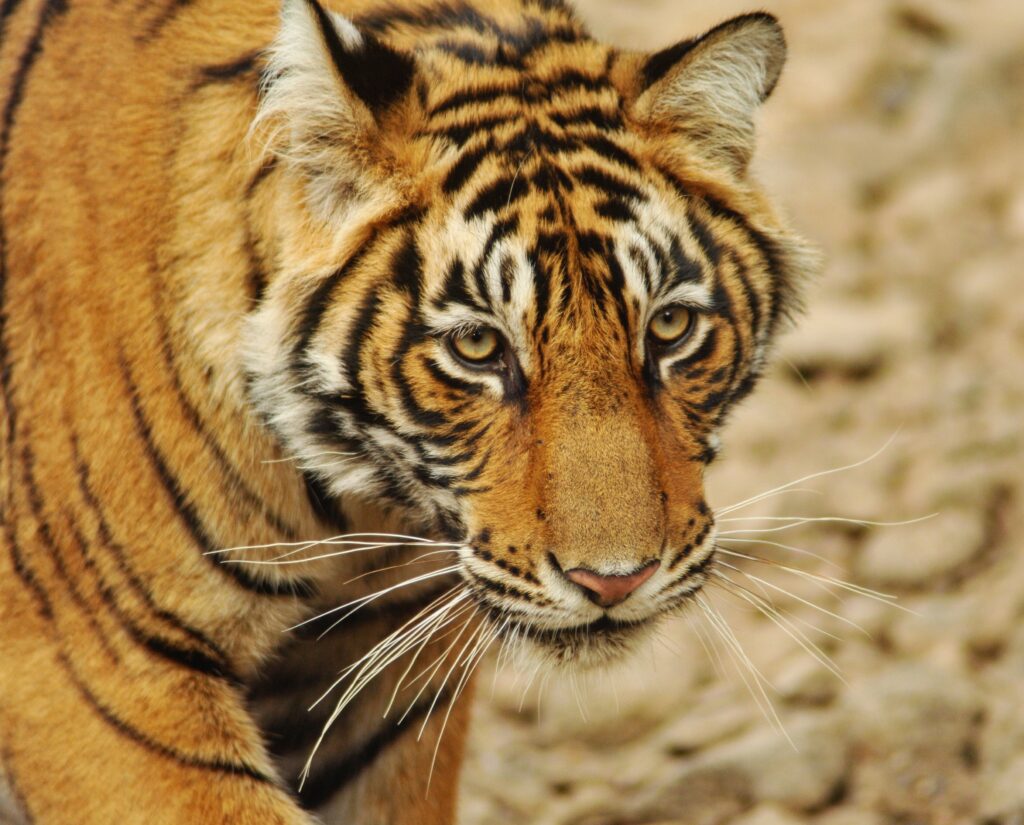
The Evolution of Safari Parks
Starting from the 1960s, so-called “safari parks” started to appear in different countries. Those are basically open-air zoos, where animals live in relatively large open areas. Visitors could enter such territories in their own cars or even on foot. Such experimental “zoos” first began in the U.S. and then in Japan, where you could ride past walking lions.
Evolution of Safari Parks Around the World
The first full-fledged safari park was Longleat Safari and Adventure Park in England. Today in that well-known place you can find ostriches, giraffes, antelopes, zebras, and other animals, not only those native to Africa. In the 21st century, there is a huge number of such safari parks around the world. The better places, such as Longleat, often invest in conservation, as well as rescue and rehabilitate animals, for example, those who spend their lives in the circus, like Anne the elephant mentioned above. But, of course, many parks are much worse and they can never be the same as the natural environment. The animals there are kept in captivity and frequently isolated, and some of those parks adopt the practices of contact zoos, which many consider unethical and harmful for the animals.
Eastern Africa: The Authentic Safari Experience
Real safari without violence towards animals can be found where it once originated – in Eastern Africa. Here animals live and thrive in their native environment without people trying to move them to other continents and intrude on their lives. Tanzania has made great progress in establishing national parks and reserves with clear rules and regulations for the visits into those protected areas, which helps to protect the country’s spectacular conservation areas. This, coupled with Tanzania’s outstanding biodiversity and natural beauty, makes it one of the best countries for safari tourism, if not the best in all of Africa.
Instagram’s Top Safari Destinations
If we search Instagram for hashtags and geotags with the word “safari” and then analyze the stats, we’ll see that there are three African countries in the top 10: Tanzania, South Africa, and Kenya. The first place is taken by the Victoria Falls National Park, where the main attraction is, of course, the spectacular waterfalls. But among true safari destinations, pictures from the Serengeti National Park are the most “Instagrammed” with over 160.000 photos tagged.
Tanzania: The Clear Leader in Wildlife Safari Adventures
Tanzania shines as the ultimate destination for wildlife safaris. With a flourishing tourism industry, robust security measures, and a plethora of other attractions, Tanzania promises a delightful, secure, and unforgettable journey. Beyond safaris, you can immerse yourself in local tribal traditions, visit stunning natural wonders like lakes and waterfalls, unwind on Zanzibar’s beaches, explore underwater wonders in the Indian Ocean, and embark on Mount Kilimanjaro expeditions. The beauty lies in crafting a diverse African vacation within one nation, seamlessly combining safaris with an array of activities. Tanzania stands as the unrivaled leader in offering a multifaceted African experience.
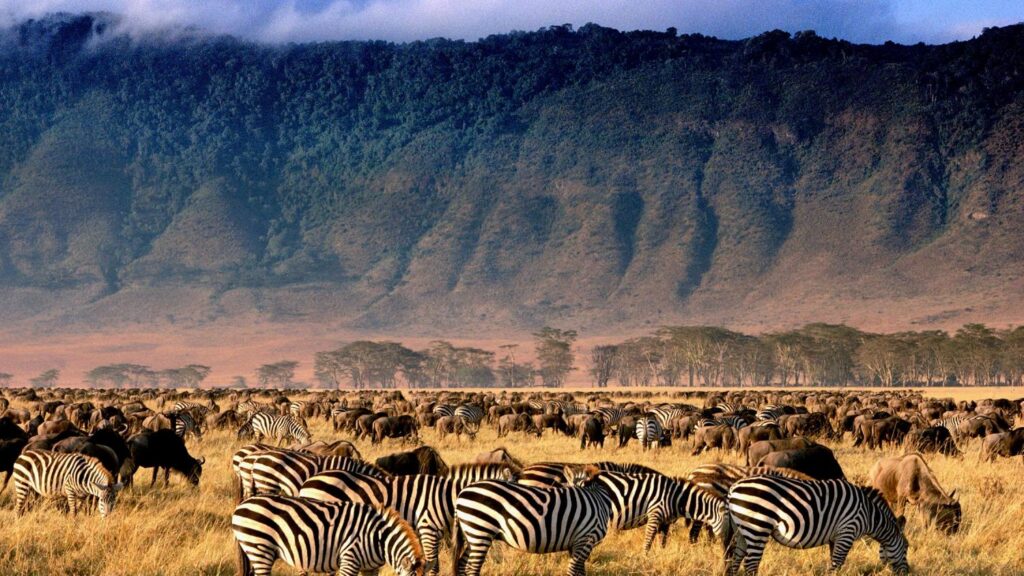
The Popular Protected Areas in Northern Tanzania
The most popular protected areas in Tanzania are located in the north of the country, between Lake Victoria and Mount Kilimanjaro. We have already named them: Serengeti, Ngorongoro, Tarangire, Arusha, and Kilimanjaro National Park itself, whose main attraction is the eponymous peak, the highest in Africa. In addition to the Kilimanjaro trek, the north of Tanzania can offer guests two more interesting climbs – to the top of Kilimanjaro’s little brother, Meru volcano, and to Ol Doinyo Lengai, which is considered to be a sacred mountain among the local tribes. Among famous sites nearby there are also Lake Manyara National Park and three major lakes: Manyara, Eyasi, and Natron.
Lesser-Known Gems in Western, Central, and Southern Tanzania
We have long specialized in the organization of nature tours in Tanzania and know all about local safaris. This is why we can confidently say that the incredibly rich travel opportunities of this African country are not limited to the most famous national parks we mentioned above. In the west of Tanzania, as well as in its central and southern parts, there are national parks and reserves that deserve attention. We can especially note Ruaha, Nyerere as part of the Selous, Katavi, as well as Gombe Stream, and Mahale Mountains, among other national parks and reserves.

Duration of a Safari
Animals’ captivating interactions often occur during morning and evening hours, free from seeking shelter from the blazing sun.
“All I wanted to do now was get back to Africa. We had not left it yet, but when I would wake in the night, I would lie, listening, homesick for it already.” – Ernest Hemingway, “Green Hills of Africa”
Planning Your Safari Trip
Key Elements of a Safari Trip
There are three elements to a safari trip: safari vehicle rides, rest at one of the nearby hotels, and transfers between the hotel and the national park. Good planning allows you to minimize transfer time so that you will have more time to enjoy the main activities or rest.
Typically, it’s a good idea to stay within the same park for at least three days, ideally five
or even more. You can choose a different location within the park for each night. Moving from one place to another gives you the opportunity to explore the park from different angles. Park zones may feature unique zoos with diverse animal species, ensuring varied wildlife encounters. For example, in the Ngorongoro Crater, you’ll see hippos and elephants, but you won’t see giraffes or cheetahs. And in the Serengeti, the river zone is different from the savannah zone, and so on.
Choosing Your Accommodation: Tented Camps vs. Lodges
In Tanzania, you’ll have the opportunity to choose between two types of accommodation in the parks: tented camps and lodges. You can also sleep in guesthouses and hotels located in the nearby towns.Popular park accommodations include “Serengeti, Ngorongoro, and Tarangire lodges.” Tented camps relocate seasonally to follow wildlife.
Both tented camps and lodges have their advantages and disadvantages. In lodges, there are walls and a roof over your head, and you can take a shower whenever you like. The meals are quite comfortable as well. Tented camps are less expensive, but you’ll sleep in a canvas tent. There will be a separate tent with a bucket shower, toilet, and washbasin. And the meals will be cooked by the camp chef and served in a common tent.
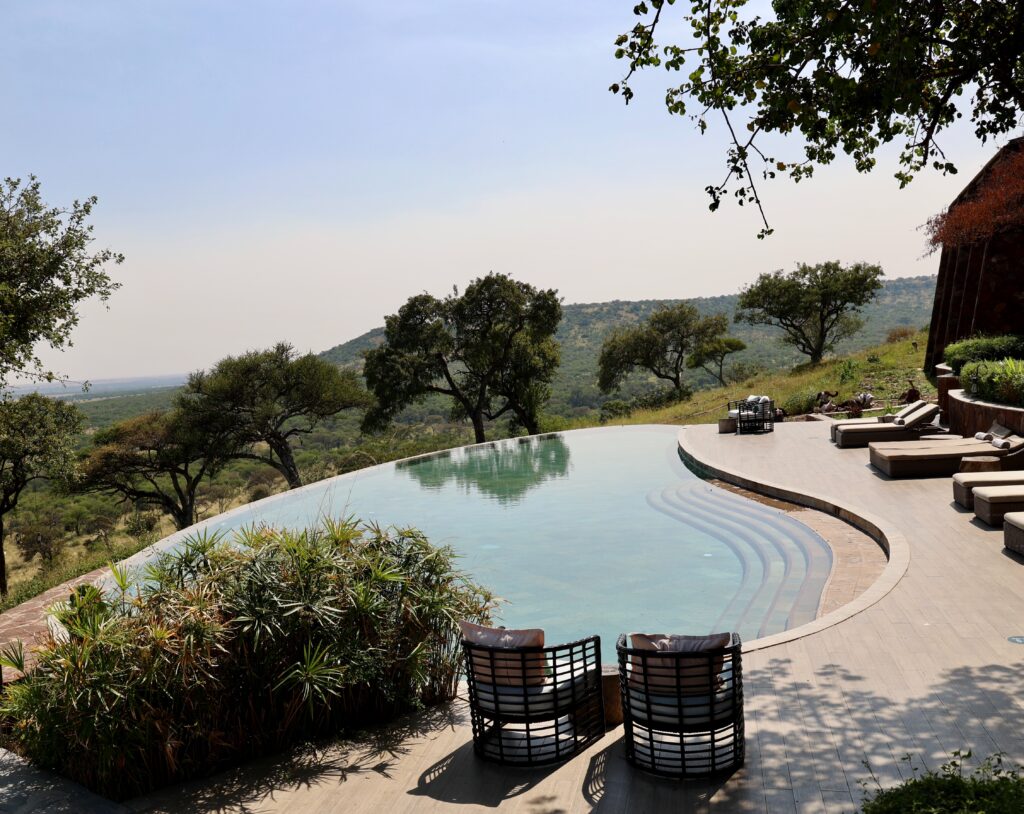
Considering Weather and Seasons for Safari Planning
When planning a safari, you also need to pay attention to the weather, as well as to the wet and dry seasons. During the dry season, animals gather in one place, and therefore, you’ll be able to see more of them in a short time. In the wet season, animals wander across the territory, so it is harder to find them. However, during this time, the savannah turns bright green and begins to bloom, creating beautiful landscapes for photography.
The Ecological Aspect of Safari
Safari tours can have both positive and negative impacts on the environment. On the one hand, they provide significant funding for the conservation of national parks, the maintenance of infrastructure, and the fight against poaching. This contributes to the preservation of unique African ecosystems and the protection of endangered species.
More tourists can harm nature through habitat disruption, pollution, and disturbing wildlife. It’s essential for safari operators and tourists alike to follow responsible tourism practices. Follow park rules: Stay on paths, be quiet, and avoid feeding or disturbing animals to ensure a respectful visit.
Many safari companies are committed to sustainable and eco-friendly practices. They support local communities, engage in wildlife conservation efforts, and minimize their ecological footprint. When planning a safari, consider choosing operators and accommodations with strong environmental and ethical commitments.
Conclusion
The word “safari” has come a long way from its origins as a Swahili word meaning “journey” to symbolizing the ultimate wildlife adventure. From its early days as a hunting expedition to the modern era of ethical wildlife observation, safaris have evolved into a popular and cherished form of travel. African nations, especially Tanzania, continue to be the premier destinations for safari enthusiasts, offering breathtaking landscapes, diverse wildlife, and a range of safari experiences to choose from.
A safari is not just about observing animals; it’s a journey into the heart of nature, a chance to disconnect from the modern world and immerse oneself in the wild. Whether you prefer the classic game drive in a safari vehicle, a serene hot air balloon ride, or a leisurely boat safari, Africa’s national parks and reserves offer a plethora of ways to explore and appreciate the beauty of the natural world.
While enjoying the adventure of a lifetime, it’s crucial to prioritize responsible tourism and environmental conservation. Support ethical safaris, tread lightly, preserve African wonders for future generations.
Explore Africa’s safari gems, from the Serengeti’s Great Migration to Ngorongoro’s Big Five and Ruaha’s wilderness. Pack your bags, prepare your camera, and embark on a journey that will forever change your perspective on the natural world and the importance of its preservation. Safari njema!

